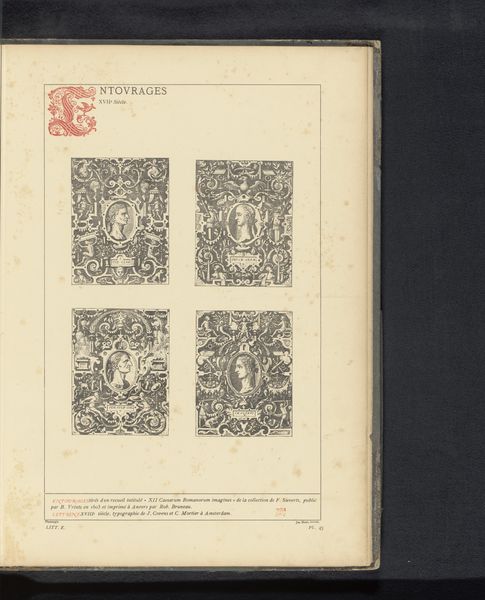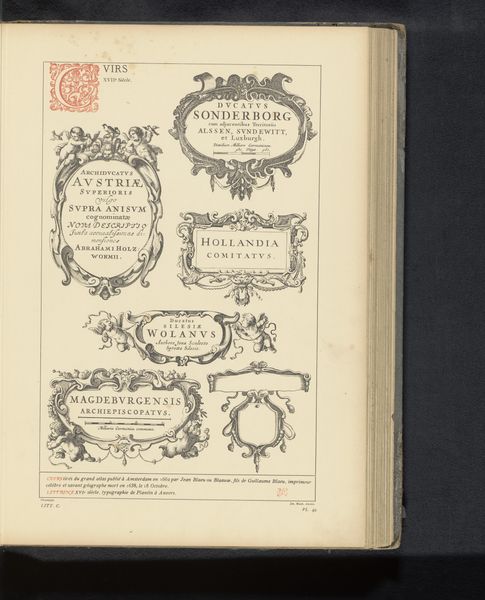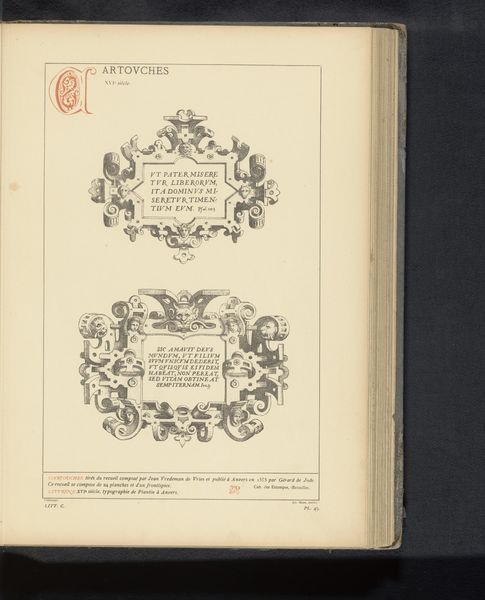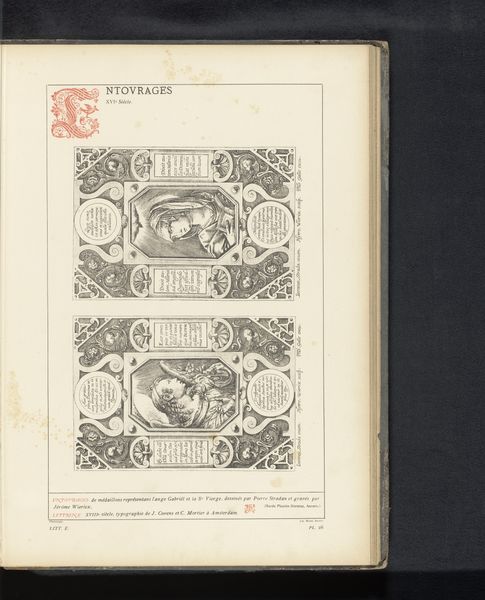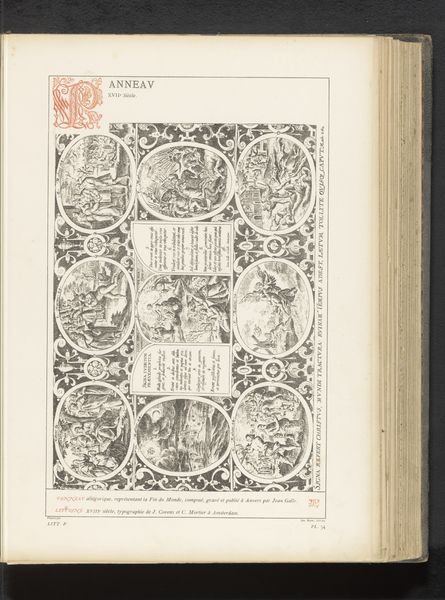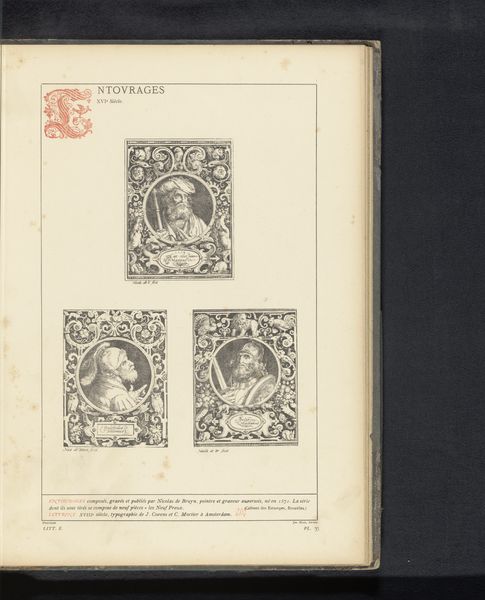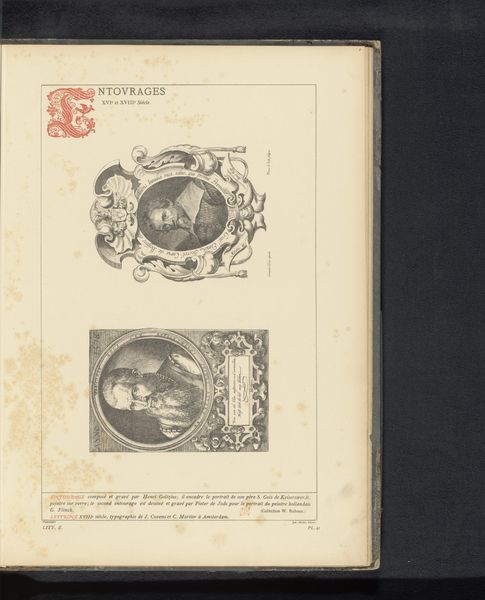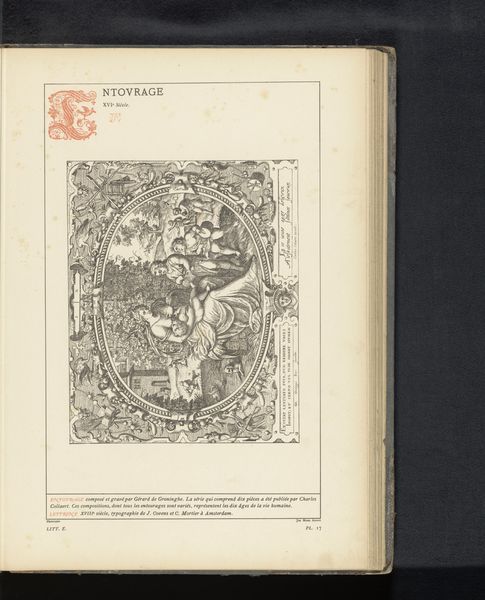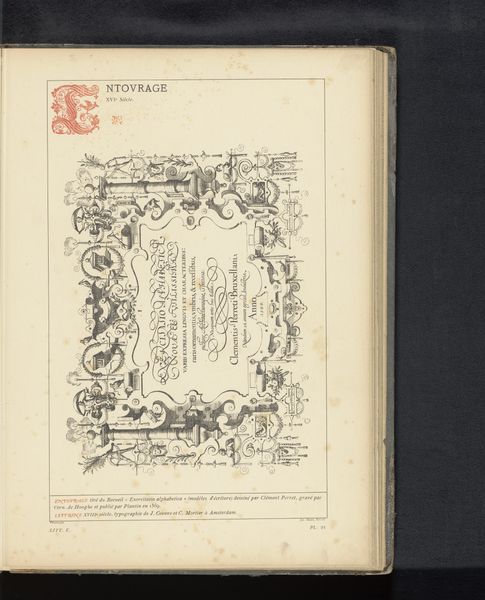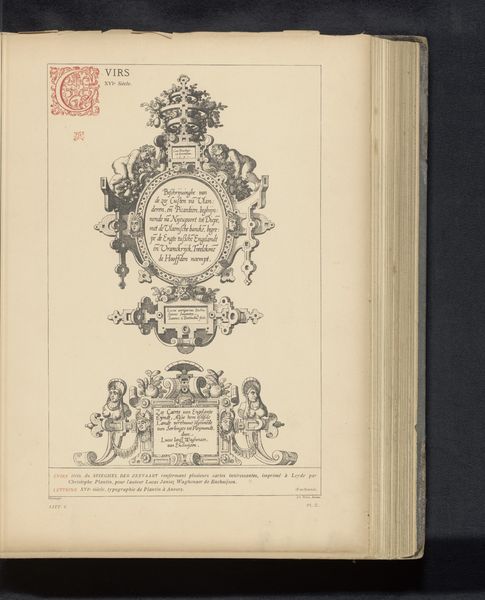
Reproductie van een titelpagina en drie prenten van Romeinse goden uit Deorum dearumque capita van Ortelius, door Philips Galle before 1880
0:00
0:00
print, engraving
#
portrait
# print
#
figuration
#
11_renaissance
#
ancient-mediterranean
#
line
#
history-painting
#
engraving
Dimensions: height 343 mm, width 231 mm
Copyright: Rijks Museum: Open Domain
Editor: This is a reproduction from ‘Deorum dearumque capita’ by Ortelius, engraved by Philips Galle. It seems to depict Roman gods and was made before 1880. What strikes me is the uniformity and craft in each miniature portrait. What's your take on it? Curator: As a materialist, my immediate thought is about the production of these prints. Consider the labor involved in engraving, the accessibility of printed images versus paintings, and how that shifted the dissemination of classical knowledge. These aren't simply depictions of gods; they're commodities, shaped by the economic realities of their time. Who was the target market? And how did that influence the work? Editor: That’s fascinating! I hadn't considered the role of production and accessibility so directly. It changes my view on how we look at classical subject matter, the intention and meaning beyond it. Curator: Exactly. Look at the quality of the engraving. That level of detail wasn't cheap. Someone was paying for highly skilled labor to reproduce these images, fueling this type of industry. Did this support new markets or further enrich existing trade dynamics? How were they received by their original audience, not as high art but practical image making? Editor: So, by understanding the material circumstances of its creation, we're getting closer to understanding its social and economic role. What were these images even used for? Curator: Precisely! These images enter a network of exchange – influencing craft production and perhaps broader understandings of ancient culture and commerce. Examining the print-making process exposes networks of artists and the commodification of classical knowledge within sixteenth-century society. Editor: Thinking about it like that, I've learned a lot about how art functions beyond its visual elements. Curator: Likewise, and by continuing to question the means of art production we gain greater insight into the art objects themselves!
Comments
No comments
Be the first to comment and join the conversation on the ultimate creative platform.

